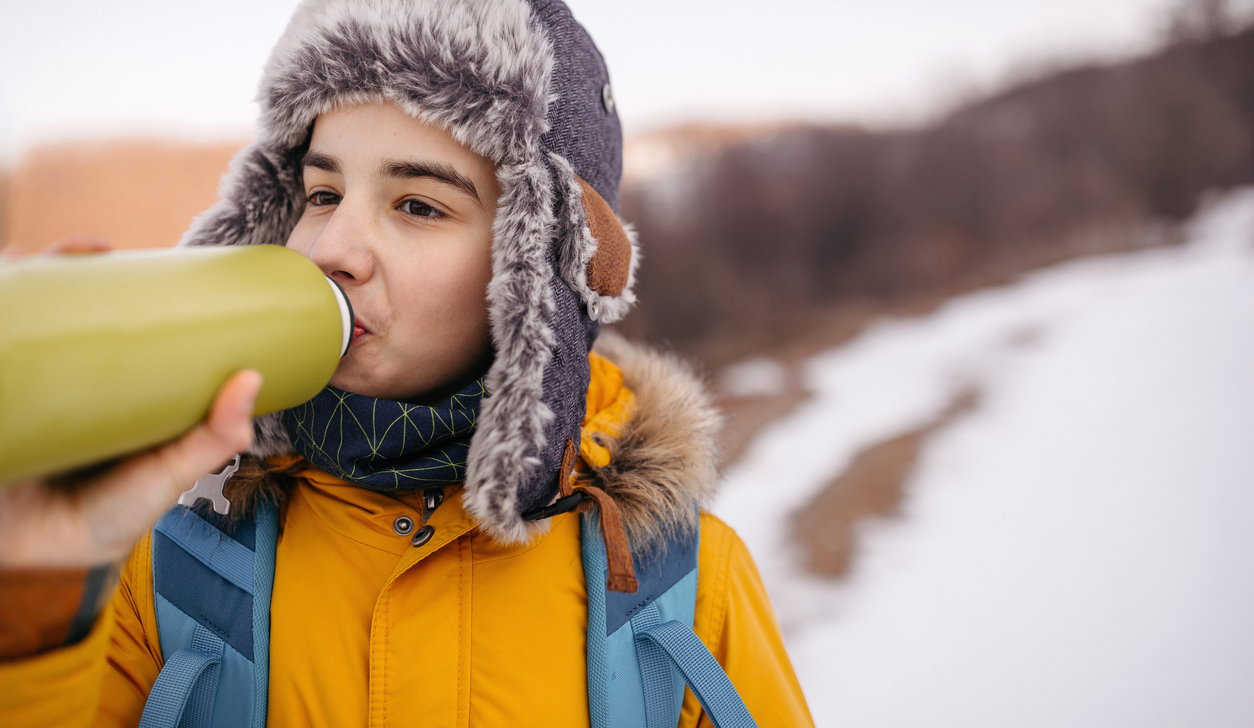Winter Dehydration: Are You At Risk?
Staying hydrated in the summer is easier, because when you’re working out in the heat, you notice how much you are sweating. However, when you’re bundled up in cold, dry winter weather, it’s harder to gauge your fluid loss. (See Dehydration Warning Signs.)
Being well hydrated is one of the most important considerations for optimal performance, regardless of the season. Here’s what you need to know to make sure you’re completely hydrated during the winter. (See also Individualize Your Hydration Schedule.)
The Air Is Dry and Cold
When you breathe in, your body humidifies the air. That’s why you can see your breath when you exhale. What you may not realize is that this causes you to lose considerable amounts of fluid through respiration.
Also, winter conditions make for fast evaporative sweat loss. Any part of your body that is exposed to the elements will not be sweaty for long, but that doesn’t mean your body isn’t losing water.
You’re Bundled Up in Layers
Depending on how many layers you wear, you may be carrying a considerable amount of extra weight. Extra weight means extra effort to move. Extra effort to move means increased exercise intensity. Increased exercise intensity lends itself to heavier breathing and more sweating, which take us back to the basic problem.
You Don’t Feel Thirsty
This is the most important issue to be aware of. In the summer, when we become dehydrated, our bodies elicit a thirst response, helping to prevent dehydration. In the winter, our body’s ability to elicit this response is hindered. Without getting into specifics, the way our bodies respond to cold temperatures alters the brain’s ability to detect dehydration. When we aren’t thirsty, we may not drink, which prompts further dehydration.
Dehydration seriously hinders performance and wellbeing. Avoid it by heeding these tips:
Hydrate Early and Often
- Drink non-carbonated, non-caffeinated fluid (about 16 ounces every hour) before you exercise to ensure that you start fully hydrated
- During exercise, drink 4-8 ounces of liquid every 15-20 minutes
- For workouts lasting longer than 1 hour, drink a sports drink to replenish lost fluids and electrolytes
- After exercising, drink 16-24 ounces of water per pound lost (weigh yourself before and after you work out to determine pounds of water lost)
Be Aware of the Signs of Dehydration
- Early fatigue
- Faster breathing and rapid heart rate
- Dizziness
- Headache
- Dark yellow urine (you want it to be almost clear)
- So remember, bundle up and drink up!
RECOMMENDED FOR YOU
Winter Dehydration: Are You At Risk?
Staying hydrated in the summer is easier, because when you’re working out in the heat, you notice how much you are sweating. However, when you’re bundled up in cold, dry winter weather, it’s harder to gauge your fluid loss. (See Dehydration Warning Signs.)
Being well hydrated is one of the most important considerations for optimal performance, regardless of the season. Here’s what you need to know to make sure you’re completely hydrated during the winter. (See also Individualize Your Hydration Schedule.)
The Air Is Dry and Cold
When you breathe in, your body humidifies the air. That’s why you can see your breath when you exhale. What you may not realize is that this causes you to lose considerable amounts of fluid through respiration.
Also, winter conditions make for fast evaporative sweat loss. Any part of your body that is exposed to the elements will not be sweaty for long, but that doesn’t mean your body isn’t losing water.
You’re Bundled Up in Layers
Depending on how many layers you wear, you may be carrying a considerable amount of extra weight. Extra weight means extra effort to move. Extra effort to move means increased exercise intensity. Increased exercise intensity lends itself to heavier breathing and more sweating, which take us back to the basic problem.
You Don’t Feel Thirsty
This is the most important issue to be aware of. In the summer, when we become dehydrated, our bodies elicit a thirst response, helping to prevent dehydration. In the winter, our body’s ability to elicit this response is hindered. Without getting into specifics, the way our bodies respond to cold temperatures alters the brain’s ability to detect dehydration. When we aren’t thirsty, we may not drink, which prompts further dehydration.
Dehydration seriously hinders performance and wellbeing. Avoid it by heeding these tips:
Hydrate Early and Often
- Drink non-carbonated, non-caffeinated fluid (about 16 ounces every hour) before you exercise to ensure that you start fully hydrated
- During exercise, drink 4-8 ounces of liquid every 15-20 minutes
- For workouts lasting longer than 1 hour, drink a sports drink to replenish lost fluids and electrolytes
- After exercising, drink 16-24 ounces of water per pound lost (weigh yourself before and after you work out to determine pounds of water lost)
Be Aware of the Signs of Dehydration
- Early fatigue
- Faster breathing and rapid heart rate
- Dizziness
- Headache
- Dark yellow urine (you want it to be almost clear)
- So remember, bundle up and drink up!











